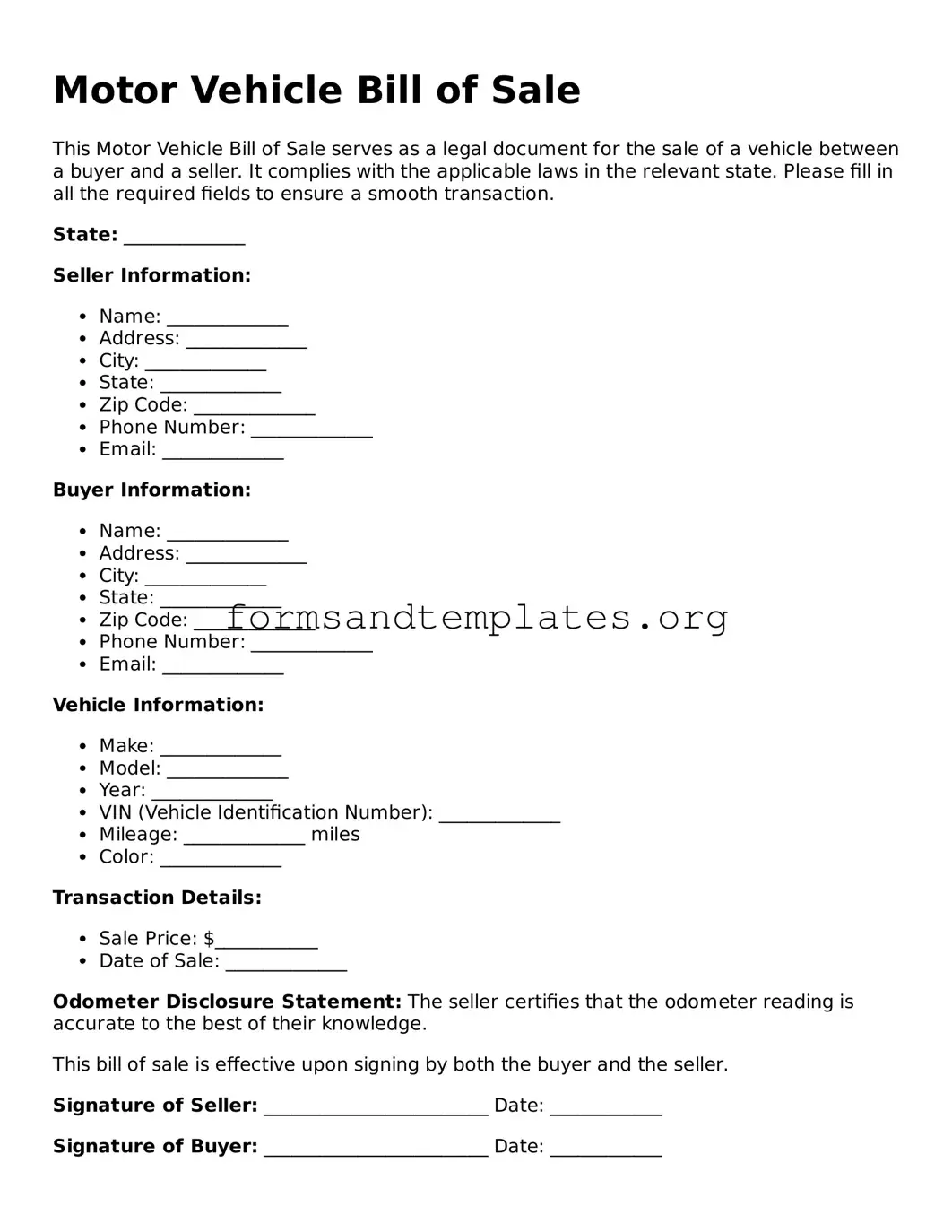What is a Motor Vehicle Bill of Sale?
A Motor Vehicle Bill of Sale is a legal document that serves as proof of the sale and purchase of a vehicle. It outlines the details of the transaction, including information about the buyer, seller, and the vehicle itself. This document is crucial for transferring ownership and may be required for vehicle registration and title transfer.
Why do I need a Bill of Sale?
A Bill of Sale is important for several reasons:
-
It provides legal evidence of the transaction.
-
It protects both the buyer and seller by documenting the terms of the sale.
-
It may be required by your state for registering the vehicle in the new owner's name.
Essential details to include are:
-
The names and addresses of both the buyer and seller.
-
The vehicle's make, model, year, and VIN (Vehicle Identification Number).
-
The sale price of the vehicle.
-
The date of the transaction.
-
Signatures of both parties.
Do I need to notarize the Bill of Sale?
Notarization requirements vary by state. In many states, notarization is not mandatory, but it can add an extra layer of security and validity to the document. Check your state’s laws to determine if notarization is necessary.
Can I use a Bill of Sale for a vehicle purchased from a dealership?
While dealerships typically provide their own sales documents, a Bill of Sale can still be useful for your records. It can serve as an additional proof of purchase and may help in cases of disputes or for warranty claims.
What if the vehicle has a lien on it?
If there is a lien on the vehicle, the seller must disclose this information in the Bill of Sale. It is advisable to resolve the lien before completing the sale to ensure the buyer receives clear title to the vehicle.
Is a Bill of Sale the same as a title transfer?
No, a Bill of Sale is not the same as a title transfer. The Bill of Sale documents the sale, while the title transfer is the official process of changing ownership with the state. Both documents are often required to complete the sale legally.
Bill of Sale forms can be obtained through various sources, including:
-
Online legal document services.
-
Your local Department of Motor Vehicles (DMV).
-
Automotive supply stores.
Make sure to use a form that complies with your state's requirements.
What should I do after completing the Bill of Sale?
After completing the Bill of Sale, both the buyer and seller should keep a copy for their records. The seller should also ensure that the title is properly transferred to the buyer. Finally, the buyer should register the vehicle with their state’s DMV as soon as possible.
